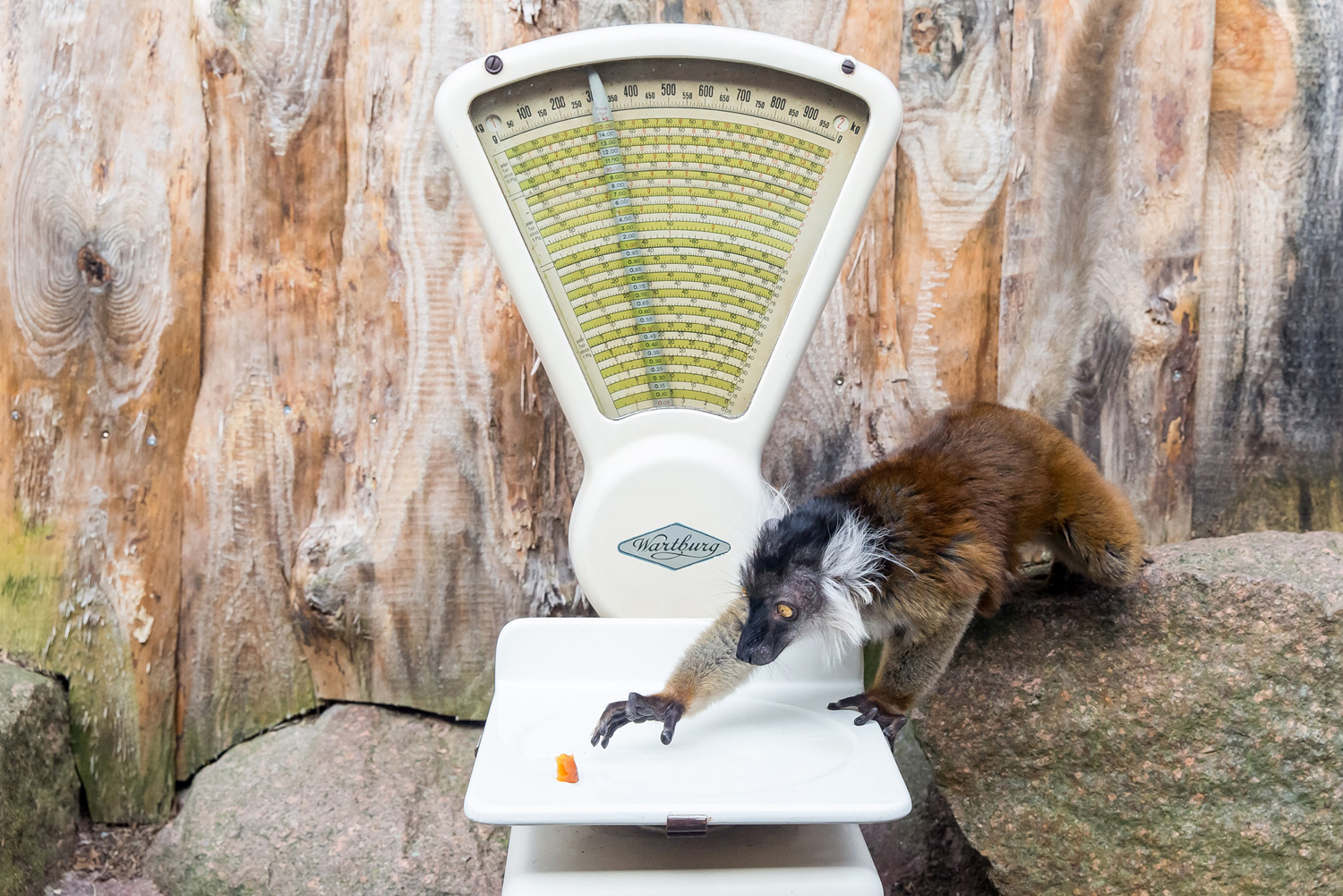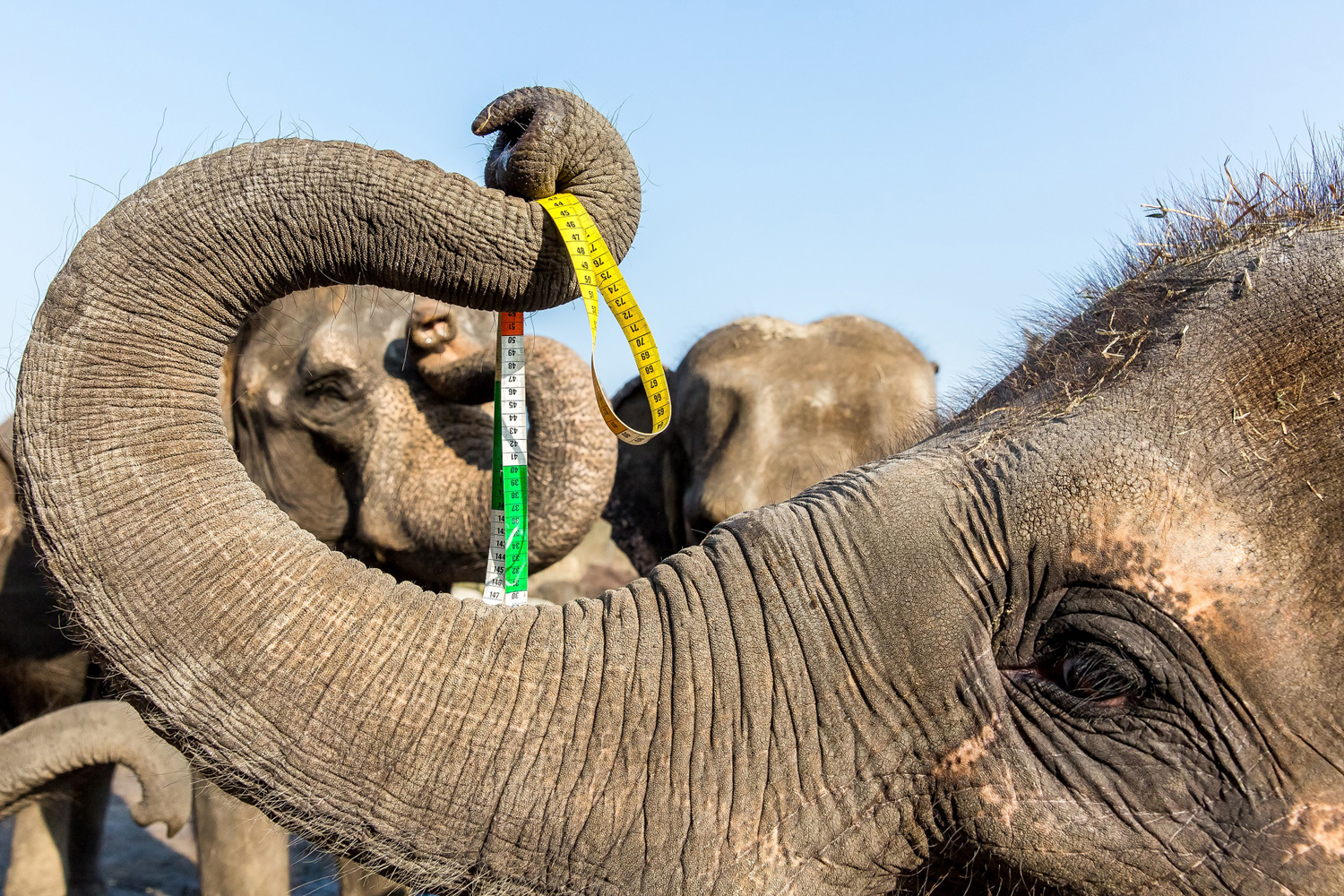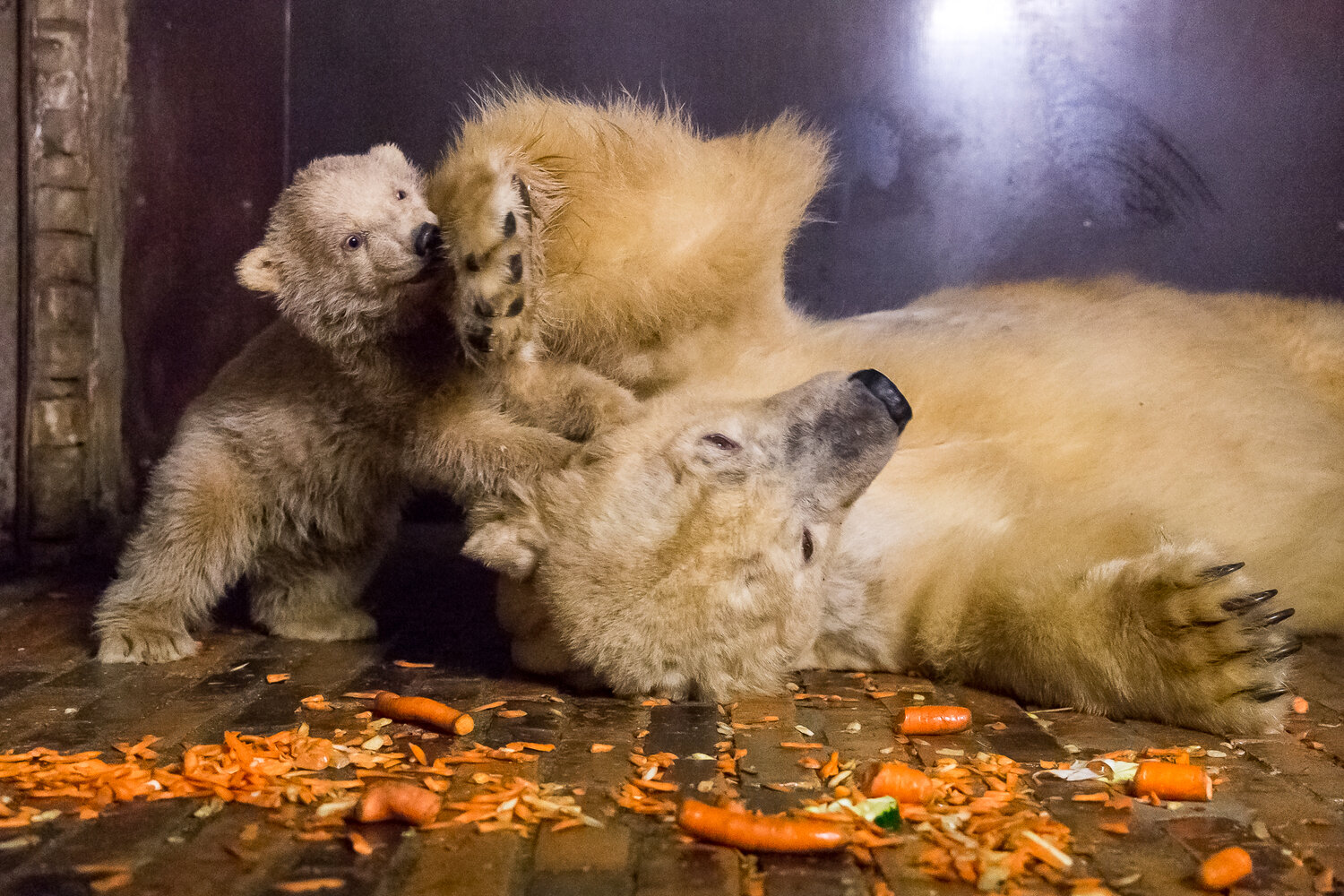One, two, three... Could you stop moving, please? Taking an inventory of so many furry, feathery and scaly inhabitants can be a longwinded process. At the end of the year, Zoo Berlin and Tierpark Berlin were home to a total of 28,460 animals of 2,153 species. That means Berlin remains the city with the highest number of different species.
From A for Axolotl to Z for Zebra: at the end of 2016, the Tierpark had 9,018 animals of 790 different species, while the Zoo and Aquarium had 19,442 animals of 1,363 different species. The largest of them all is the Tierpark’s male African elephant Tembo, who is 2.86 metres tall and weighs in at around 4.5 tonnes. At the other end of the scale is the tiny Roborovski hamster in the Zoo’s Nocturnal House, which weighs just 25 grams – about the same as a small bar of chocolate.
The number of animals in the Zoo, Tierpark and Aquarium changes all the time. Last year, the red kangaroos, Grant’s zebras, and California sea lions all welcomed cute babies to the world. The most spectacular birth was on 3 November, when polar bear Tonja (aged seven) became a mother for the first time.
Tierpark facilities have also been upgraded. “As well as carrying out urgent rebuilding activities, last year we introduced several smaller improvements,” says Zoo and Tierpark Director Dr Andreas Knieriem. “These have optimised the way the animals are kept, improved working conditions for our employees, and made a visit to the Tierpark an even better experience for our guests. We have an excellent year behind us and can look forward to an eventful coming year.”
Berlin’s animal parks are some of the city’s most popular tourist attractions. As in the previous year, more than 4.5 million visitors came to the Zoo, Tierpark and Aquarium in 2016. Zoo and Aquarium Berlin received more than 3.2 million visitors, while the Tierpark welcomed 1.3 million – a nine-percent increase on 2015. Last year also saw an impressive new record: more Berlin citizens own an annual Tierpark pass than ever before. In 2016 the Tierpark had over 30,000 annual pass holders – that’s 18 percent more than in 2015.
Looking forward to 2017 in the Zoo, Aquarium and Tierpark Berlin
Tierpark Berlin
From spring 2017, the Alfred Brehm building, erected in 1963, will be transformed into a modern rainforest house. Construction will begin on the outdoor area in April. After the renovations, the building will house the endangered Goodfellow’s tree-kangaroo alongside Malayan sun bears, Indochinese tigers, clouded leopards, Sumatran tigers, Asian golden cats, Javan leopards, and Sunda gharials.
From mid-March the bird of prey free-flight show will start its first summer season in the newly designed Kiekemal Waldbühne arena, taking visitors on a journey into the fascinating world of owls and raptors.
Zoo Berlin
Construction on the panda habitat is progressing in leaps and bounds. The panda couple from China will be able to move into their new home at Zoo Berlin this summer. Fans of the adorable black-and-white bears can keep up to date on the latest developments through our Panda Blog: www.zoo-berlin.de/de/aktuelles/panda-blog.
Preparations for the renovations on the Predator House have already begun, and construction work is scheduled to start in the autumn. Large cats in particular are set to benefit from the modern, closer-to-nature facility. Alongside the lions, jaguars, leopards and tigers will be lesser-known predators such as servals, sand cats, jaguarundis, tayras and threatened mongoose species.
The feathered inhabitants of Eagle Rock will also be getting a more modern dwelling. The construction work is slated for completion by next winter, and many species, such as the king vultures, will be moving into their redesigned homes this summer. A new highlight for visitors will be the opportunity to walk through the aviaries housing northern owls and African raptors.
Aquarium Berlin
Following last year’s modernisation of the reptile area and the crocodile hall, the Aquarium now provides its inhabitants with optimal conditions that resemble as closely as possible their natural habitats. For the first time, the Aquarium now also hosts a feeding time with live commentary: twice a week keepers teach visitors about crocodilians as they give the Ganges gharials their tasty meal. www.aquarium-berlin.de/de/aktuelles/news/artikel/date-mit-biss


